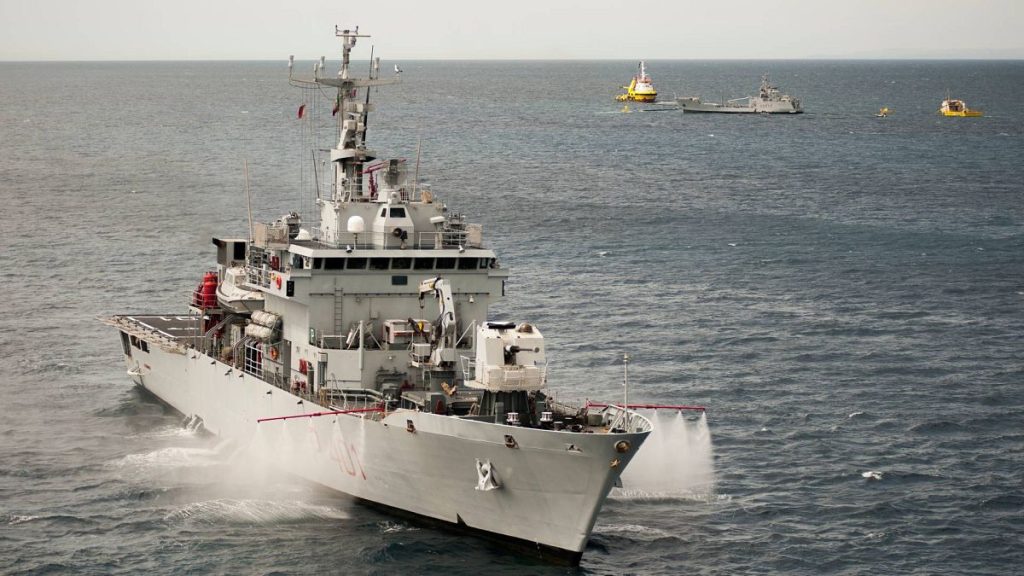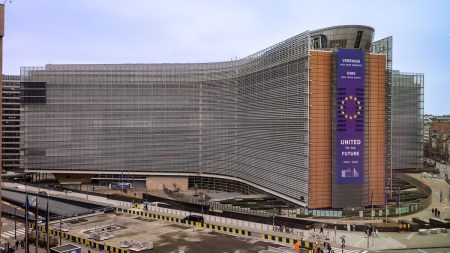Italy’s controversial policy of offshoring migrants has resumed after a two-month hiatus, sparking renewed debate about the ethics and legality of such measures. A naval vessel, the Cassiopea, is currently en route to Shengjin, Albania, carrying 49 migrants, primarily from Egypt and Bangladesh. These nations are classified as “safe” countries by the Italian government, a designation that forms the basis of their expedited repatriation process. This renewed effort underscores Italy’s ongoing struggle to manage increasing migration flows across the Mediterranean Sea and highlights the tension between national immigration policies and international legal frameworks.
The Italian Interior Ministry has defended the transfer, emphasizing that all individuals on board the Cassiopea meet the stipulated criteria for repatriation: they are adult males in good physical and mental health, originating from countries deemed safe by the Italian government. This careful selection process, according to the ministry, ensures that only those deemed ineligible for asylum within Italy are subject to repatriation. Concurrently, the ministry reported that 53 other migrants, also arriving via the Mediterranean, successfully presented passports indicating nationalities from countries considered “unsafe” by Italy, thus avoiding transfer to Albania. This underscores the complex and often fraught process of verifying nationality and asylum claims, with individuals seeking to navigate the system in hopes of remaining within Italy.
The core of the controversy lies in the discrepancy between Italy’s “safe country” list and rulings from the European Court of Justice (ECJ). The ECJ has explicitly stated that asylum applications cannot be fast-tracked if the applicant’s country of origin is not considered “wholly safe.” Both Egypt and Bangladesh, the primary nationalities of the migrants aboard the Cassiopea, do not meet this “wholly safe” criterion according to the ECJ. However, Italy maintains its classification of these countries as safe, bolstered by a December ruling from the Italian Supreme Court that affirms the government’s right to utilize its own list of safe countries. This legal clash highlights the ongoing tension between national sovereignty and adherence to international legal precedent.
The transfer process involves transporting the migrants from the Shengjin port to the Gjader detention center in Albania. This detention period allows for further processing and coordination between Italian and Albanian authorities. Critics argue that this process bypasses the thorough investigation of individual asylum claims mandated by international law, potentially exposing vulnerable individuals to risks upon return to their home countries. The expedited process also raises concerns about due process and the potential for overlooking legitimate asylum claims amidst the pressure to manage migration flows.
This renewed wave of repatriations comes amid a surge in migrant arrivals to Italy. January 2024 witnessed the arrival of 1,750 migrants, a significant increase from the 1,300 arrivals recorded in January 2023. This escalating influx underscores the urgency driving Italy’s migration policies and the ongoing challenges posed by navigating the humanitarian needs of migrants with domestic political pressures. The increased arrivals also highlight the broader Mediterranean migration crisis, with individuals continuing to risk perilous journeys in search of safety and better opportunities.
The resumption of Italy’s migrant offshoring policy to Albania is a complex issue intertwining legal disputes, humanitarian concerns, and political realities. The clash between Italian national policy and ECJ rulings underscores the broader debate surrounding the management of migration flows within the European Union. The efficacy and ethical implications of designating “safe countries” and fast-tracking asylum procedures remain contested, with concerns about potential human rights violations and the adequacy of protection afforded to individuals seeking refuge. As migrant arrivals continue to rise, the pressure on Italy’s reception system intensifies, further complicating the search for sustainable and humane solutions to this ongoing crisis. The future trajectory of this policy, and its impact on the lives of migrants traversing the Mediterranean, remains to be seen.










